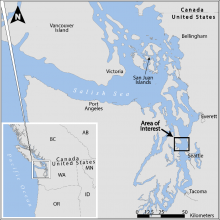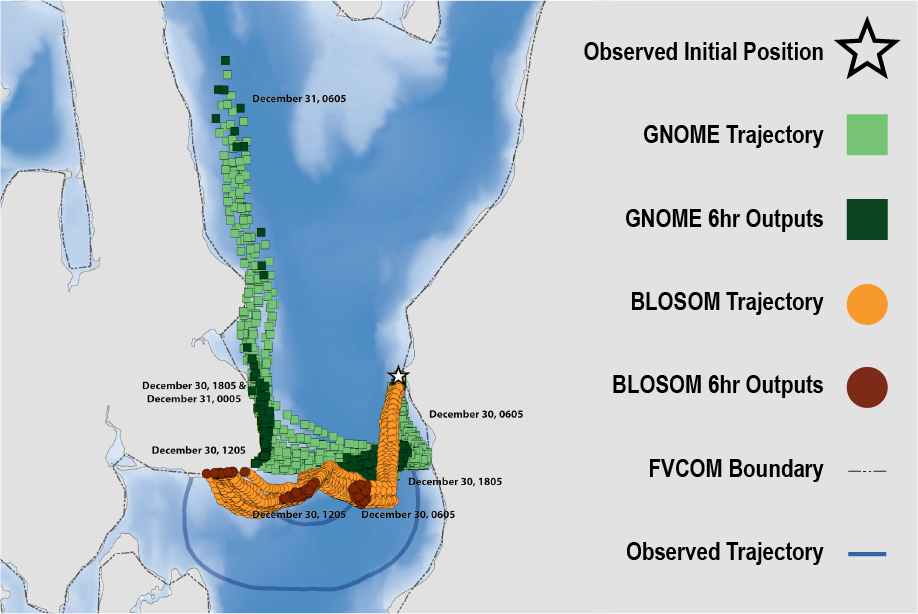SSM Oil Spill Transport: Pt. Wells Oil Spill Model
Pt. Wells Oil Spill Model Comparison: BLOSOM and GNOME

As part of a larger project led by the Department of Energy's National Energy Technology Laboratory (NETL) regarding research on oil spill prediction, prevention, and preparation, PNNL generated hydrodynamic model outputs that were used in a model comparison effort between two oil spill models. The oil spill transport models compared were NOAA's GNOME (General NOAA Operational Modeling Environment) and NETL's BLOSOM (Blowout and Spill Occurrence Model). In addition, PNNL created Python scripts that convert outputs from the Salish Sea Model to be directly readable by both oil spill transport models.

PNNL's Salish Sea Model outputs were used to simulate the historic Pt. Wells oil spill from December 30, 2003, chosen because past attempts to recreate the spill from start to finish were unsuccessful. During a late-night refueling, the Foss tank barge 248-P2 was overfilled and over 4,600 gallons of Bunker Fuel #6 was released into the Puget Sound near Seattle. During a short 30 hour spill, the oil crossed the channel and landed within Port Madison. During this relatively short timeframe, small inaccuracies can have a significant impact on the trajectory, highlighting the importance of validated hydrodynamics in recreating the oil pathway.
Project Highlights
- Using hydrodynamic outputs from the Salish Sea Model and historical wind forcing data, the simulated oil trajectories from both GNOME and BLOSOM followed the approximate historic spill path and beached at the correct location.
- A number of similarities and differences were discovered between BLOSOM and GNOME, which might aid in future model development and enables a better understanding of current oil trajectory model capabilities.
- Methods were developed by PNNL for optimizing the solution for surface transport and converting outputs to be compatible with a variety of oil spill transport models.
Contacts and Project Team
- PNNL: Tarang Khangaonkar (CO-PI), Amoret Bunn (CO-PI), Jonathan Whiting
- NETL: Kelly Rose (Co-PI), Jenn Bauer, Rodrigo Duran, Lucy Romeo, Jason Vielma, Patrick Wingo
Study Reports and Publication
Duran R, L Romeo, J Whiting, J Vielma, K Rose, A Bunn, J Bauer. 2018. Simulation of the 2003 Foss Barge - Point Wells Oil Spill: A Comparison between BLOSOM and GNOME Oil Spill Models. Journal of Marine Science and Engineering, 6(3), 104-142. doi: 10.3390/jmse6030104